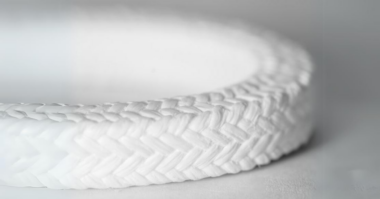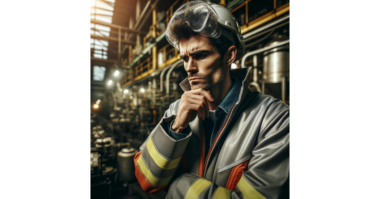By Glenn R. Owens Jr., Senior Engineer, Flowserve
The importance of maintaining a dynamic sealing interface
Fluid motion systems rely on pumps and valves for regulating flow control inside and outside the system boundary, such as the casing of the pump or valve. A unique challenge in shaft-driven equipment is maintaining a dynamic sealing interface — one that prevents fluid from exiting the system while still allowing rotational motion between the shaft and the system boundary. End face mechanical seals have proven to be an effective way to solve this engineering.
Early pump models created a seal in one of two ways: 1) packing pliable rings around the shaft and compressing them into a seal housing until they contacted the shaft; 2) filling the seal housing with multiple bushings with close clearances over the shaft. Both methods create a sealing flow restriction along the equipment shaft, utilizing the shaft as a key part of the dynamic sealing interface.
With these designs, the amount of flow through the sealing interface — and the potential for process emissions — is proportionate to the size of the sealing interface gap. Since wear occurs as the shaft rotates and rubs inside these stationary radial sealing devices, process emissions are likely to increase as material wears away and expands the sealing interface gap. As a result, radial sealing methods are characterized by inadequate process emissions control and high rates of equipment wear, power consumption and maintenance time requirements.
Introduction of end face mechanical seals
Increasing concerns about plant efficiency, equipment life and excess process emissions necessitated a reliable sealing solution that did not use the equipment’s shaft for the dynamic sealing interface. The introduction of end face mechanical sealing was the answer to this problem. This method consists of two primary components:
1. A pair of seal rings, one attached to the rotating shaft and one fixed to the stationary body of the equipment, effectively moves the dynamic sealing interface from the equipment shaft surface to the mating face ends of the two rings. This establishes a planar, rather than annular, sealing interface.
2. Secondary sealing elements (i.e., O-rings) are then set to form a seal between the equipment and the seal rings. A spring is also added to push one ring against the other to compensate for face wear.
Together, these components comprise the essential elements of axial-sealing, end face mechanical seals. By significantly reducing the sealing interface area and narrowing the interface gap, end face mechanical seals give operators an effective means to control process emissions.
Application flexibility continues to expand
Another measure of the effectiveness of end face mechanical seals is their ability to be engineered and optimized for specific process applications. Through manipulation of seal ring geometry and the mechanical properties of different seal ring materials, the seal rings and ultimately the sealing interface can be controlled down to 10 microinches (0.25 micrometers) of sealing gap. In comparison, packing and bushing seals operate with a sealing gap in the range of 0.0001–0.010 inches (2.5–250 micrometers). This means that end face mechanical seals operate at a sealing gap 10–100 times narrower, and as such, provide a significant reduction in process emissions.
Continued advancements in end face mechanical seal design — in the areas of construction materials, seal ring tribological pairing, sealing interface topography, and component interface design and control — allow for increased optimization of the sealing interface gap. Modern analytical techniques are leading to the adoption of end face mechanical seal installations in more diverse applications, including: dry gas, ultra-high speeds (>10 000 RPM) and high pressures (>2000 psi or 137.9 bar). This specialization of end face mechanical seals has resulted in sealing solutions capable of minimizing process emissions to parts per million (PPM) levels over years of service — while requiring little to no maintenance of the seal.





Comments